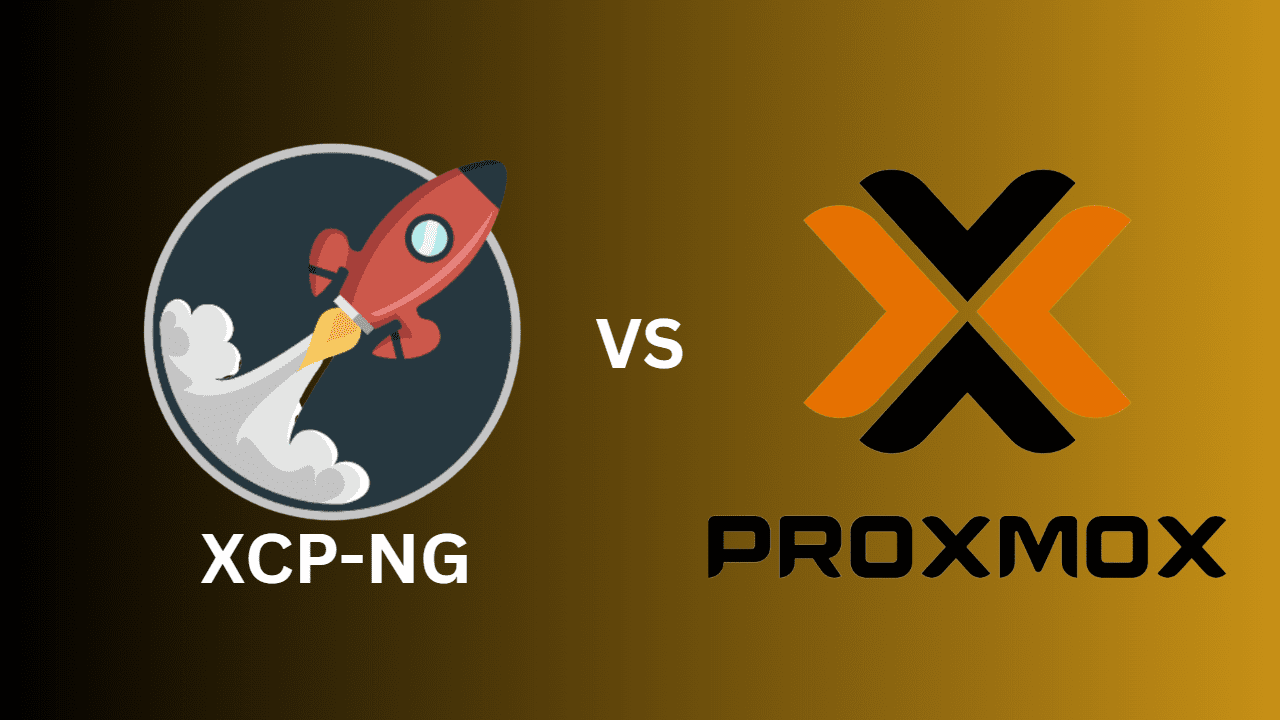1. Core Technology & Architecture
XCP-ng:
- Based on Xen Hypervisor, which has been around since 2003.
- Designed to be a turnkey, open-source enterprise virtualization platform.
- Focuses on being a robust, simple hypervisor with enterprise-grade features.
- Strong integration with Xen Orchestra for management, which provides a sleek, web-based interface.
Proxmox VE:
- Based on KVM/QEMU for virtualization and LXC for containers.
- Combines hypervisor and containerization technologies in one platform.
- Offers a more modern, flexible approach with Debian Linux as its base.
- Comes with a built-in web-based GUI that supports cluster management out of the box.
2. Features
XCP-ng:
- Primarily a virtualization hypervisor, excelling at virtual machine (VM) workloads.
- Strong focus on VM management and migration (live or storage).
- Great integration with ZFS for storage replication.
- Supports advanced features like GPU passthrough, VLAN, SR-IOV, and HA (High Availability).
- Xen Orchestra is optional but highly recommended for management.
Proxmox VE:
- Combines VM virtualization and Linux Containers in one system.
- Offers clustering, live migration, snapshots, backups, and replication.
- Built-in support for storage types like ZFS, Ceph, LVM, and NFS.
- Excellent flexibility in integrating third-party tools and custom scripts.
- Includes built-in backup scheduling and snapshots for both VMs and containers.
3. Ease of Use
XCP-ng:
- Simple to set up, but relies heavily on Xen Orchestra (or command-line tools) for comprehensive management.
- Xen Orchestra is free for basic use but has premium features under paid tiers.
- Steeper learning curve for users unfamiliar with Xen-based platforms.
Proxmox VE:
- Extremely user-friendly and well-documented.
- The web interface is feature-rich, making advanced tasks like clustering or backups straightforward.
- Built-in tools reduce the need for third-party integrations.
- More accessible to Linux-savvy administrators.
4. Ecosystem and Community
XCP-ng:
- Backed by Vates, with a growing community focused on open-source and enterprise needs.
- Ecosystem revolves around Xen Orchestra, which integrates tightly with XCP-ng.
Proxmox VE:
- A larger and more active community overall.
- Frequent updates, strong documentation, and tutorials available.
- Vibrant ecosystem, with robust forums and third-party integrations.
5. Use Cases
XCP-ng:
- Best for environments focused on enterprise-grade VM virtualization with stable, proven technology.
- Suitable for those migrating from Citrix XenServer.
- Ideal for organizations looking for a powerful hypervisor with minimal complexity.
Proxmox VE:
- Perfect for homelabs and small to medium-sized businesses that want an all-in-one virtualization platform.
- Ideal if you want to mix VMs and containers in one infrastructure.
- Great for projects involving clustering, ZFS-based storage, and advanced backups.
6. Licensing and Cost
- XCP-ng: Fully open-source with optional paid support (via Vates).
- Proxmox VE: Free to use but offers a paid subscription for enterprise repositories and support.
Conclusion
| Feature | XCP-ng | Proxmox VE |
|---|---|---|
| Virtualization | Xen-based hypervisor | KVM-based VMs + LXC Containers |
| Management | Xen Orchestra | Built-in Web UI |
| Storage Options | ZFS, LVM, NFS | ZFS, Ceph, LVM, NFS |
| Container Support | No | Yes (LXC) |
| Community/Support | Smaller but focused | Larger and active |
| Ease of Use | Simpler but requires setup | User-friendly out of the box |
| Scalability | Enterprise-grade virtualization | Homelabs to enterprise |
Choose XCP-ng if you want a dedicated virtualization hypervisor with enterprise-grade features.
Choose Proxmox VE if you prefer an all-in-one platform that mixes VMs and containers or has a stronger Linux ecosystem.




